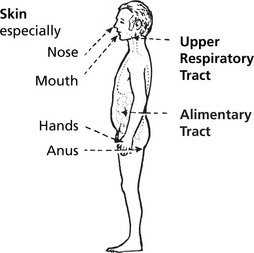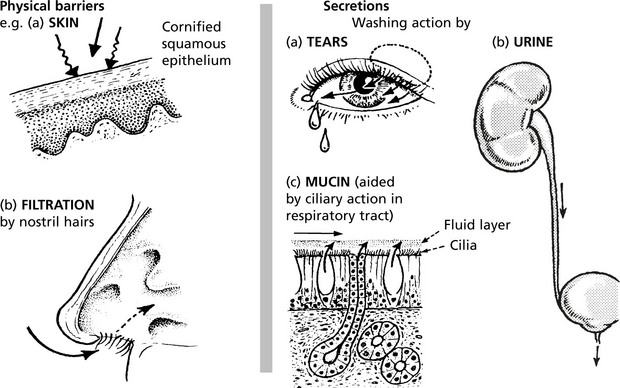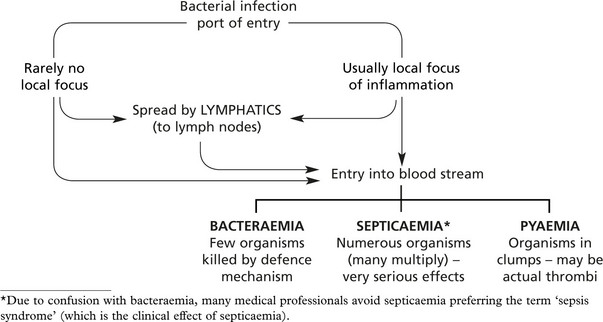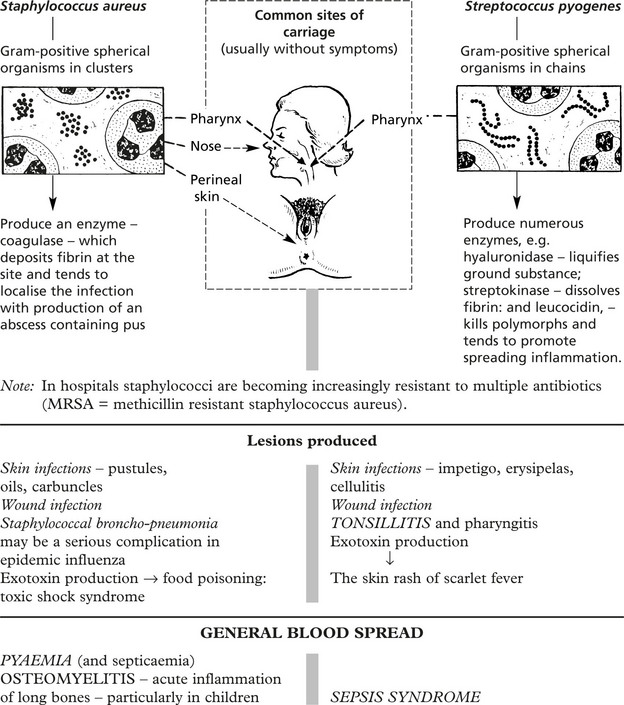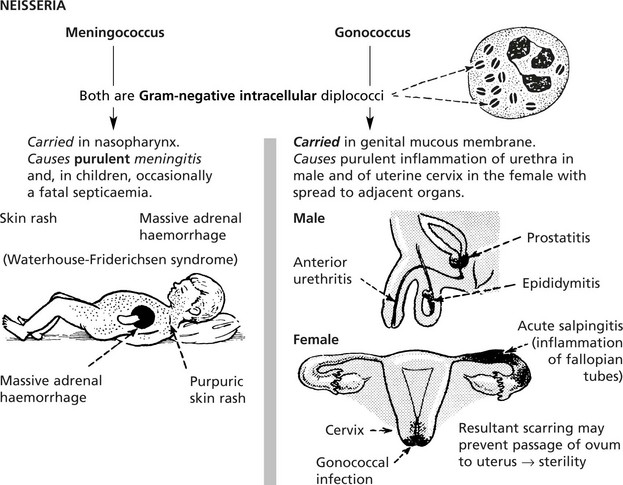Chapter 4 Infection
Infection
There are very many infections: the chapter will deal only with principles and a few examples.
| Type of Infecting Agent | Example | Example of Disease |
|---|---|---|
| BACTERIA (a very wide range) | STAPHYLOCOCCUS | ABSCESS |
| VIRUSES (a wide range) | HERPES ZOSTER | CHICKENPOX and SHINGLES |
| FUNGI (a limited range) | CANDIDA | BUCCAL and VAGINAL THRUSH |
| PROTOZOA | PLASMODIUM | MALARIA |
| Infestation with PARASITES WORMS and FLUKES | ECHINOCOCCUS GRANULOSIS | HYDATID DISEASE |
Infection and Infectious Disease
An infectious disease occurs when infection is associated with clinically manifest tissue damage.
Routes of Entry of Infecting Organisms
Contaminated food and water, e.g. enteric fever, hepatitis A, poliomyelitis, cholera.
Chemical Action
Innate Immune Response
Factors Influencing the Course of Infection
Once infection has occurred, important defence mechanisms operate:
Examples of Failure of Protective and Defence Mechanisms
Bacteria
| Exotoxins | Endotoxins |
|---|---|
| Secreted by living bacteria | Integral part of bactrial cell wall Release on death of organism (usually Gram-negative) |
| Simple proteins | Lipid-polysaccharide complexes |
| Neutralised by specific antibody (antitoxin) | Do not stimulate antibody production |
| Many actions – Enzymes, e.g. S. aureus protease – Action on intracellular signalling, e.g. V. cholerae – Neurotoxins, e.g. C. botulinum – Superantigens, e.g. S. pyogenes | Beneficialeffects:Inlowdosestimulatesprotectiveimmunity Harmful effects: In high dose ENDOTOXIC SHOCK – due to massive release of cytokines with activation of coagulation,fibrinolytic and complement cascades LPS binds cell surface receptor CD14 and is delivered to TLR4 that starts intracellular signalling cascade |
This is a form of the immune response in which reaction between the bacterial protein and sensitised lymphocytes initiates the inflammatory reaction (see p.101).
Sepsis Syndrome
Sepsis is a very serious condition in which there is a whole-body inflammatory state (systemic inflammatory response syndrome (SIRS)) in the presence of infection.
Acute Bacterial Infection
Pyogenic Bacteria
Note: Rheumatic fever and acute glomerulonephritis are complications of streptococcal infection in which the heart and kidneys are damaged. This is caused by disturbance in the immune mechanisms (type III hypersensitivity reaction) and is not due to the actual presence of streptococci in the heart and kidneys.
< div class='tao-gold-member'>
Stay updated, free articles. Join our Telegram channel

Full access? Get Clinical Tree


